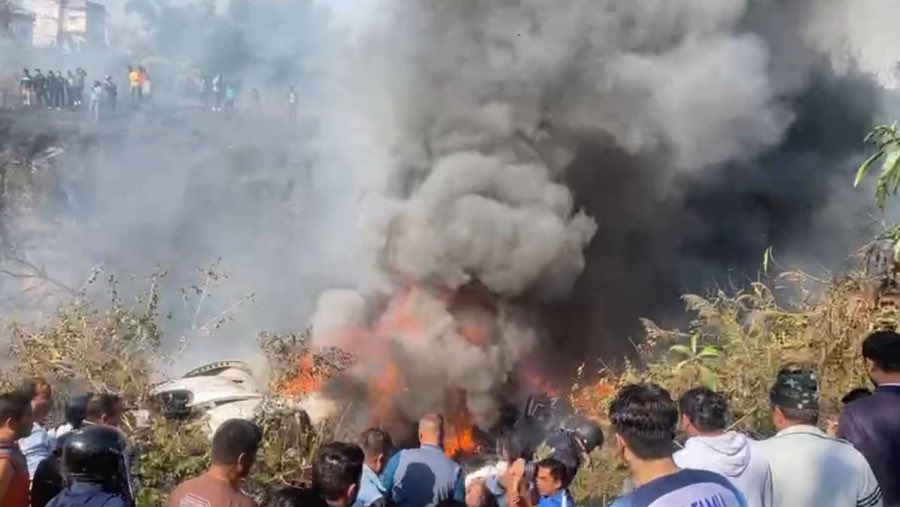
7 reasons why Nepal is witnessing frequent flight crashes
Nepal has experienced at least 12 plane crashes since 2010 and 17 since 2000.

It’s said in aviation circles that the risk to one’s life is the same whether one is attempting to climb Mount Everest or flying on any of Nepal’s airlines.
Yes, the comparison may sound harsh, especially in the wake of such a big tragedy, but the fact remains that Nepal has experienced at least 12 plane crashes since 2010 and 17 since 2000. The January 15 air crash is considered the second worst airline crash in the last three decades when Yeti Airlines crashed, killing all 72 people on board.
Here are some of the reasons behind the frequent air crashes in Nepal.
- Difficult terrain: Nepal has a challenging topography, with high mountains and narrow valleys, which make flying difficult. The country is home to the highest peak in the world, Mount Everest, which stands at 29,029 feet (8,848 m). The Himalayas, which run through Nepal, also pose a significant challenge for pilots. The mountains can cause severe turbulence, strong winds, and poor visibility, making flying conditions extremely hazardous. In addition, many airports in Nepal are in remote areas, which can make it difficult for rescue teams.
- Lack of modern technology: Many airports in Nepal need to be equipped with the latest technology with up-to-date infrastructure to support safe air travel. The country has only one international airport, Tribhuvan International Airport (TIA), and a few domestic airports. However, most of them need advanced navigation and communication systems, and the lack of such infrastructure makes flying difficult and dangerous. The airports in Nepal also need adequate runway lighting and markings.
- Poorly maintained aircraft: Many aircraft used in Nepal are old and not well-maintained. Hence, there is always the danger of experiencing mechanical failures and other problems. Most aircraft operated by domestic airlines are either old or have been in service for a long time. If they are not phased out completely, they can increase the risk of accidents as these aircraft may not be able to withstand the challenging flying conditions in Nepal. Many of the domestic airlines in Nepal need more resources or expertise to properly maintain their aircraft.
- Inadequate regulation: The aviation industry in Nepal needs to be better regulated. Without their enforcement, there is always the possibility of unsafe practices and poor maintenance of aircraft and airports. The Civil Aviation Authority of Nepal (CAAN) is responsible for regulating the aviation industry, but it has been criticised for its lack of oversight and poor enforcement of safety standards. There are reports that domestic airlines in Nepal operate without the necessary licences and permits.
- Pilot error: Pilots in Nepal often have limited training and experience, which can increase the risk of human error. Many domestic airlines in Nepal need more resources to provide their pilots with adequate training and experience. Many domestic airlines in Nepal hire pilots from other countries and their possible unfamiliarity with the terrain can result in poor risk assessment.
- Weather: Nepal has a monsoon season which can cause poor visibility and strong winds, making flying conditions more difficult. Heavy rainfall and thunderstorms can make flying conditions extremely hazardous during monsoon, which typically lasts from June to September. The weather in Nepal can change quickly and unexpectedly, making it difficult for pilots to navigate.
- Air traffic control: Nepal’s air traffic control system needs to be advanced and better equipped. Nepal’s air traffic control system is reported to be less advanced than in other countries, and this leads to delays and confusion.
Also Read: Will US do a Bosnia on Myanmar? No-fly-zone move may involve India
Next Story

